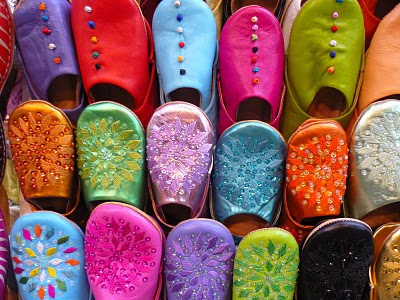
 Nourrdem got us into his shop by the way that most shopkeepers in the souks of Marrakesh do: calling out ridiculous words that will entice you in. Lauren, with her dark complexion and jet-black hair, was called beautiful in Portuguese, fish and chips was common, an invitation in French for Bri and “Cuantos Camellos, María José?” for me. I don’t look Spanish in the least, but it made me laugh. There were also choruses of “Goodbye, fat girl! You’re ugly!” when we passed yet another lantern or mirror shop.
Nourrdem got us into his shop by the way that most shopkeepers in the souks of Marrakesh do: calling out ridiculous words that will entice you in. Lauren, with her dark complexion and jet-black hair, was called beautiful in Portuguese, fish and chips was common, an invitation in French for Bri and “Cuantos Camellos, María José?” for me. I don’t look Spanish in the least, but it made me laugh. There were also choruses of “Goodbye, fat girl! You’re ugly!” when we passed yet another lantern or mirror shop.
But his invitation was not denied, and the four of us enjoyed tea for an hour before dinner. Before leaving, Nourrdem invited us for lunch on the rooftop of the store the following day. “Come between 12 p.m. and 2:30. I will wait, then we eat, then we all pay the cost.”
I also asked him about taking pictures of people and why every time I reached for my camera, the people in souks or in the markets started to shake their fingers at me. He told us about the time a man was sneakily taking pictures of him. “I don’t mind,” he said, “but just ask! I work with tourists everyday, is ok!
Man, Lucia told me that it was because they believe you’re stealing their soul through some voodoo-Lecia lens magic. That actually became a running joke on the trip.

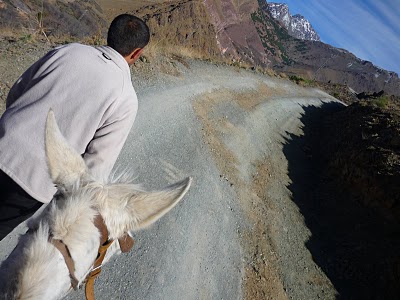 Nourrdem, you remember, with all the cousins and slaves and friends from everywhere in the world, called up his taxi-driving friend. “Yes, tomorrow at nine, meet me at the shop. We will take you to meet the Berbers.”
Nourrdem, you remember, with all the cousins and slaves and friends from everywhere in the world, called up his taxi-driving friend. “Yes, tomorrow at nine, meet me at the shop. We will take you to meet the Berbers.”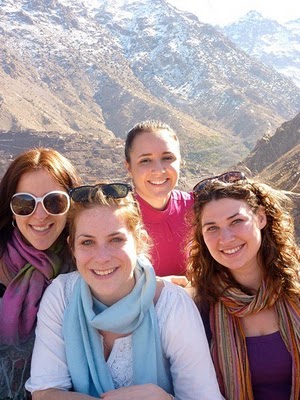

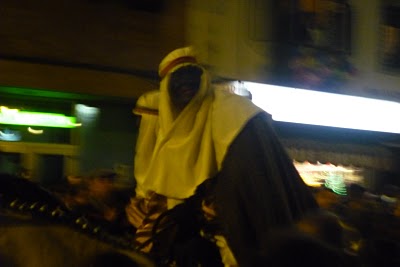 According to tradition, the infant Jesus was visited by three men from the Orient – Gaspar, Melchor and Balthasar – who came bearing gifts. This day is celebrated as the Epiphany, so kids write letters to the favored Moor, who waits for kids at the end of nativity scenes, scoops them onto his lap and asks what they want for Reyes. A Moorish version of Santa Claus. On the 5th, the kids wiggling with anticipation, the Reyes Magos storm into town by way of a parade. Kike and I camped out in front of Java Cafe in Triana at dusk when we heard the police sirens. Those elected Los Reyes, usually famous toreros or cinema directors, ride through the city for hours on gigantic floats. Announced by the Gitanos de la Orilla and the brass band, as well as Moors on horseback, the cavalcade came rolling in a good hour after projected.
According to tradition, the infant Jesus was visited by three men from the Orient – Gaspar, Melchor and Balthasar – who came bearing gifts. This day is celebrated as the Epiphany, so kids write letters to the favored Moor, who waits for kids at the end of nativity scenes, scoops them onto his lap and asks what they want for Reyes. A Moorish version of Santa Claus. On the 5th, the kids wiggling with anticipation, the Reyes Magos storm into town by way of a parade. Kike and I camped out in front of Java Cafe in Triana at dusk when we heard the police sirens. Those elected Los Reyes, usually famous toreros or cinema directors, ride through the city for hours on gigantic floats. Announced by the Gitanos de la Orilla and the brass band, as well as Moors on horseback, the cavalcade came rolling in a good hour after projected.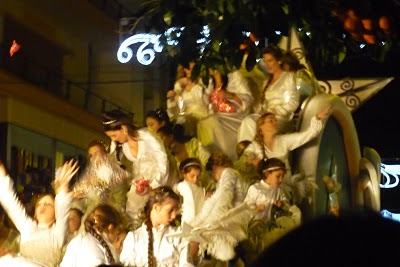 The city of Sevilla, as well as each neighborhood or district, had between 15-20 large floats, fashioned after Indiana Jones, Alice in Wonderland, aliens and the like. Lit up by hundreds of bulbs, the floats are stocked with bags and bags of candy, toys, balls and sometimes even small appliances! The streets were just as packed as they would be during a Semana Santa procession, but instead of somberly remembering our favorite saints, people jumped and sang, asking the hundreds of children atop the floats for candy. I brought a cloth bag and held it over my head, both for defensive purposes and because it could catch candy in it. The little girl next to me complained that I was getting more than here until I pointed to the ground and to all the candy not caught by spectators. Shut her up. A few hours later, after watching Sevilla FC kick Barca´s culo, we went back to Java for a drink. My boots were caked with hard candy gook, and the streets had yet to be cleaned. I felt slightly dizzy from the sugar high and getting knocked in the head a few times.
The city of Sevilla, as well as each neighborhood or district, had between 15-20 large floats, fashioned after Indiana Jones, Alice in Wonderland, aliens and the like. Lit up by hundreds of bulbs, the floats are stocked with bags and bags of candy, toys, balls and sometimes even small appliances! The streets were just as packed as they would be during a Semana Santa procession, but instead of somberly remembering our favorite saints, people jumped and sang, asking the hundreds of children atop the floats for candy. I brought a cloth bag and held it over my head, both for defensive purposes and because it could catch candy in it. The little girl next to me complained that I was getting more than here until I pointed to the ground and to all the candy not caught by spectators. Shut her up. A few hours later, after watching Sevilla FC kick Barca´s culo, we went back to Java for a drink. My boots were caked with hard candy gook, and the streets had yet to be cleaned. I felt slightly dizzy from the sugar high and getting knocked in the head a few times.


